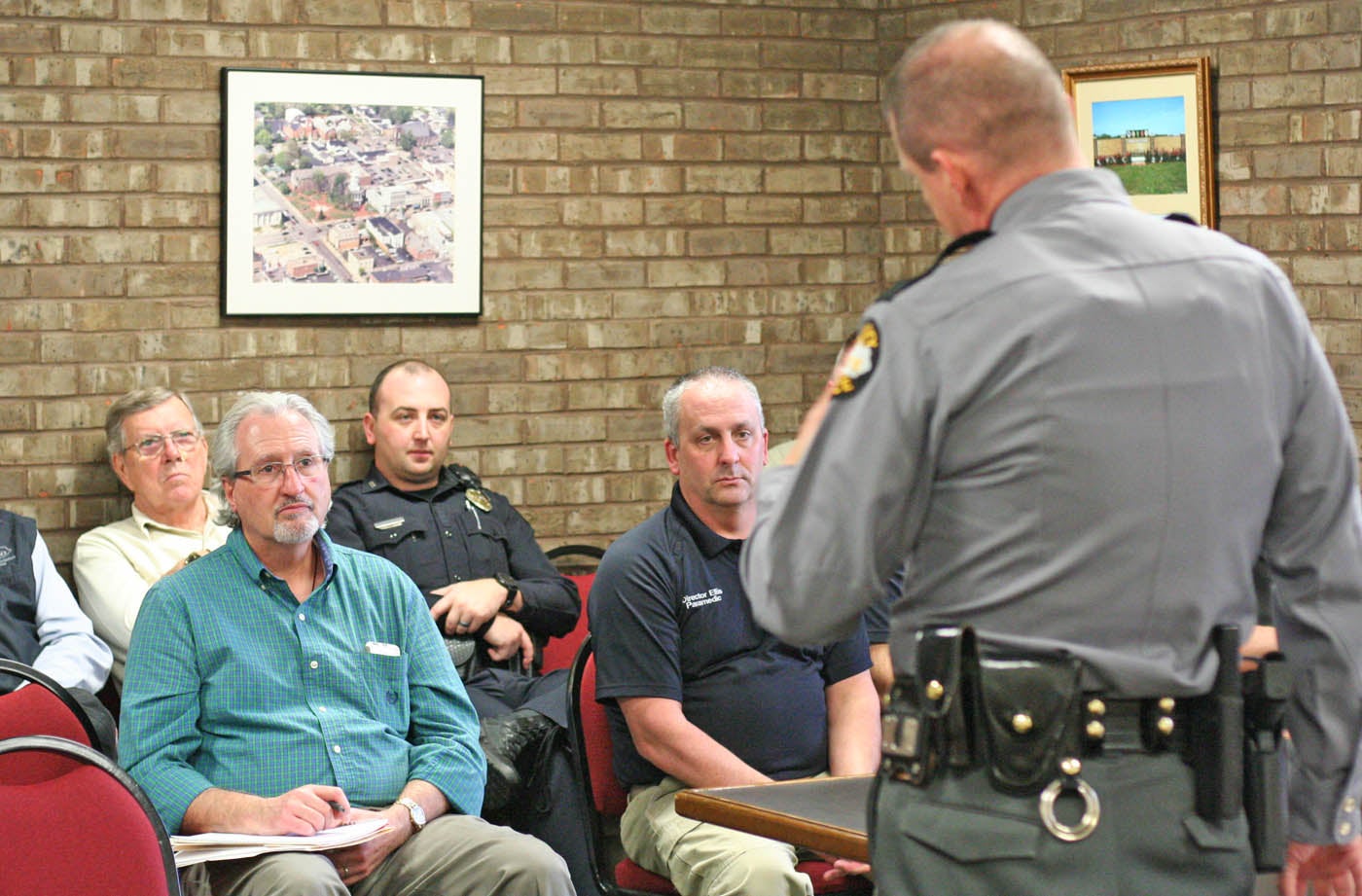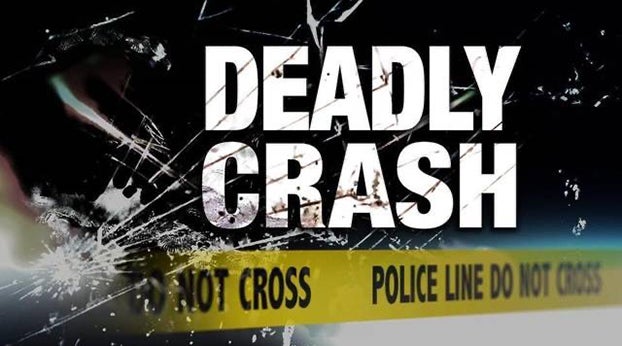KSP program teaches alternative approach to active shooter threats
Published 8:48 am Tuesday, February 27, 2018

- Kendra Peek/kendra.peek@amnews.com Trooper Chris Damron, speaking to school officials, law enforcement and others about the Run, Hide, Fight program that the Kentucky State Police teaches.
Trooper Chris Damron says shooters are evolving, so training and drills need to evolve, too. That’s the mentality behind a program offered by Kentucky State Police, which Damron travels around the state training teachers on.
Damron visited Boyle County Friday to explain a little about the training to local school officials, law enforcement representatives and other leaders.
After the presentation, Danville Schools Superintendent Keith Look and Director of Facilities Christy Denny, who were both present, said they were planning on doing some kind of training for staff in the district.
School Resource Officers Chase Broach, who is a Danville Police officer, and Boyle Sheriff’s Deputy Ricky Sellers said they had also been speaking to the schools about similar trainings.
No one has committed to using the KSP training locally yet.
Damron said KSP’s training is based on “Run, Hide, Fight,” another program that teaches people how to deal with active shooter situations. “The first thing you do is run; hide if you have to; and fight as a last resort.”
KSP’s program is different from the traditional lockdown method, where teachers and students simply stay in their rooms with the doors locked. That’s the method used by Boyle County and Danville, and they’re not alone — most schools enter into lockdown mode when there’s a perceived threat.
“There’s a place for lockdown,” Damron said. “But like I tell them, ‘Would you want to be locked in a phone booth with a bobcat? Why do you want to lock yourself inside a building with an active shooter? Why don’t you get out?’” This training, he said, is a way of looking beyond lockdown.
Damron did not go into specific detail about how staff will be trained to fight someone with a weapon, other than saying the program will teach them how to use their surroundings in the school building.
Students don’t go through the drills and Damron said he doesn’t recommend taking them through it because, “Who are, most of the time, your active shooters? Students.” Damron said he doesn’t want students to know what the active shooter procedures are and then have a shooter exploit those procedures.
“We go over how to present this to the kids,” he said, answering questions from audience members. “Who knows better the procedures of a fire drill or all these other drills they do, who knows better than the children? You kind of want to mask an active shooter drill.”
It was after the shooting at Sandy Hook Elementary School in Newtown, Connecticut, on Dec. 14, 2012, that troopers began offering the training.
“One of the troopers in western Kentucky, his wife was a principal at one of the schools close to Paducah,” Damron said.
She asked her husband if the state police had any type of training or program to deal with an active shooter situation. The trooper researched and found there wasn’t one being offered by the agency, and was encouraged to develop one.
Participants in KSP’s training go through scenarios with someone portraying a shooter, so they can learn how they will react when faced with threats of that type. It teaches them the best ways to get away from the danger, if possible, and fight back if getting away isn’t an option.
The program also goes over the definition of an active shooter, signs to look for, what the law enforcement response will be and more.
“Law enforcement guys know, if we go there and there’s an active shooter, we do not treat the wounded … You’re not there to help the kids; you’re there to stop the killer,” Damron said. “Every round you hear, every round that is fired, is a child dying. That’s pretty sobering.”
The training is provided to school systems at no cost and counts for three hours of continuing education, Damron said.
Damron said a survey will be conducted before the training at any particular school to help identify weak points and things to work on.
“These are only suggestions. We’re not telling anyone to do anything. We understand there’s money problems everywhere,” he said. “We do come and look and give ideas.”






